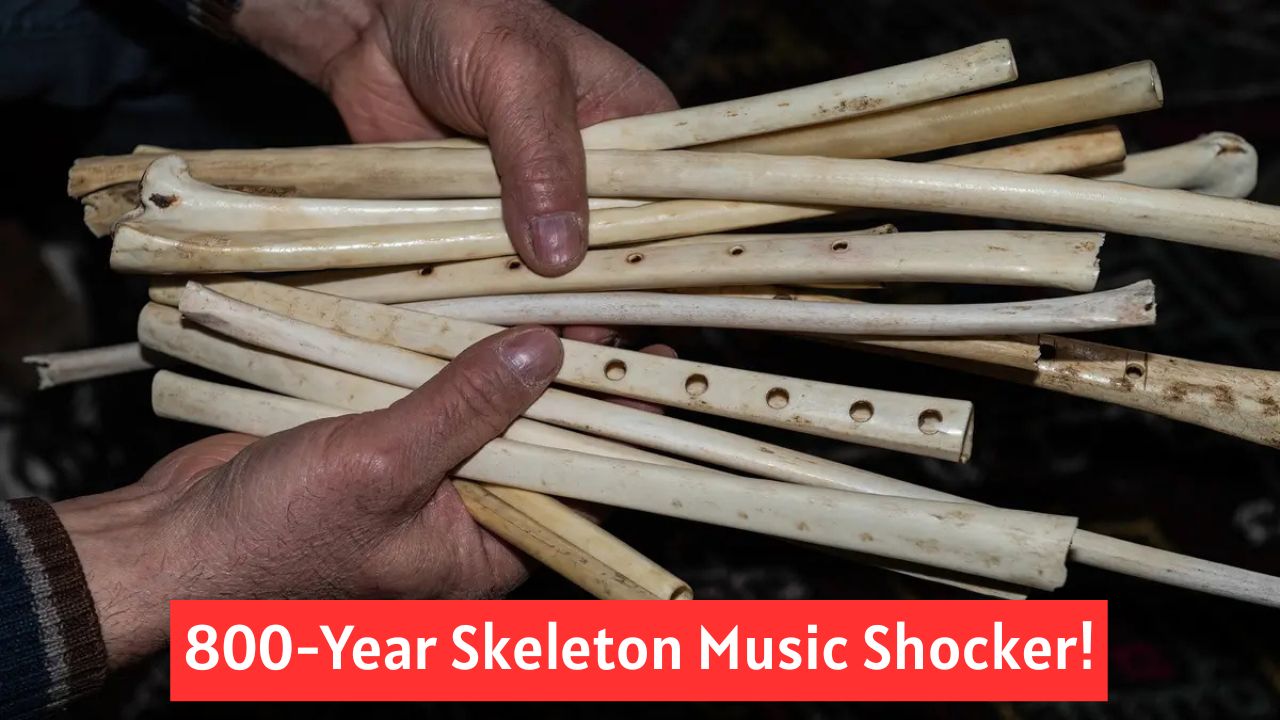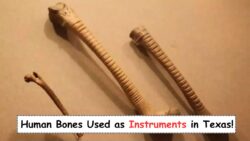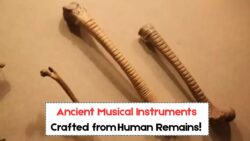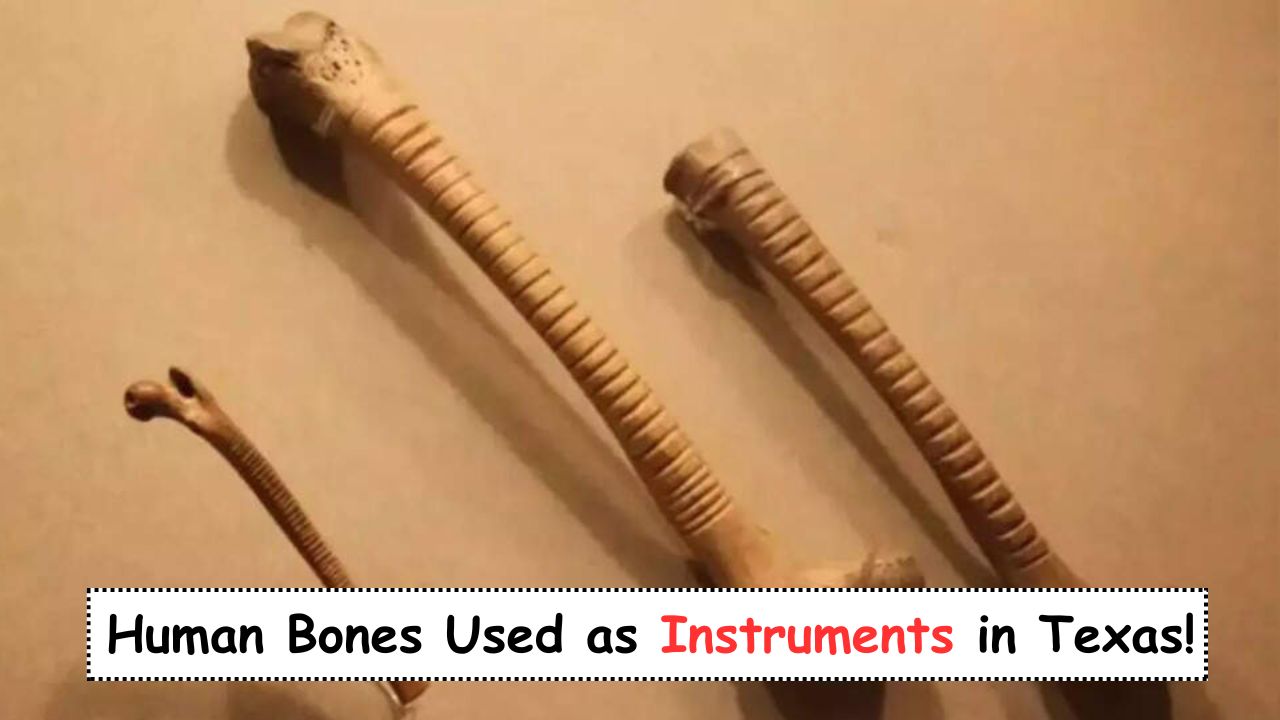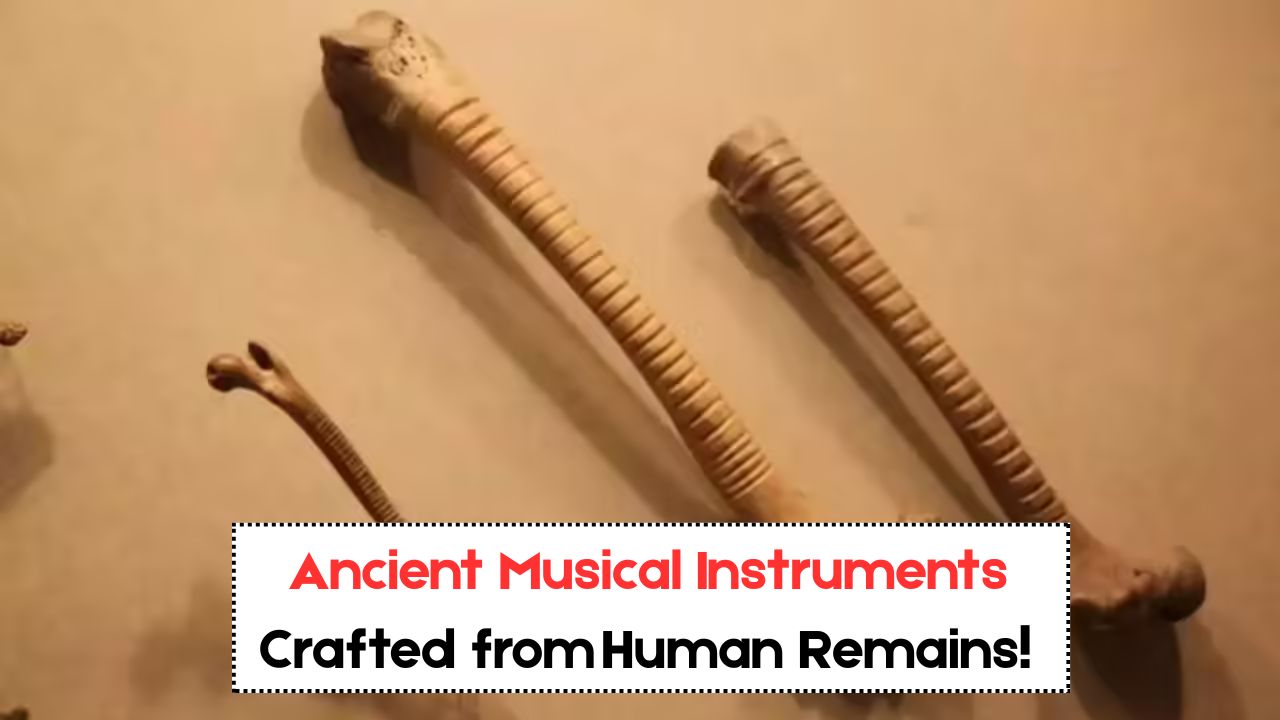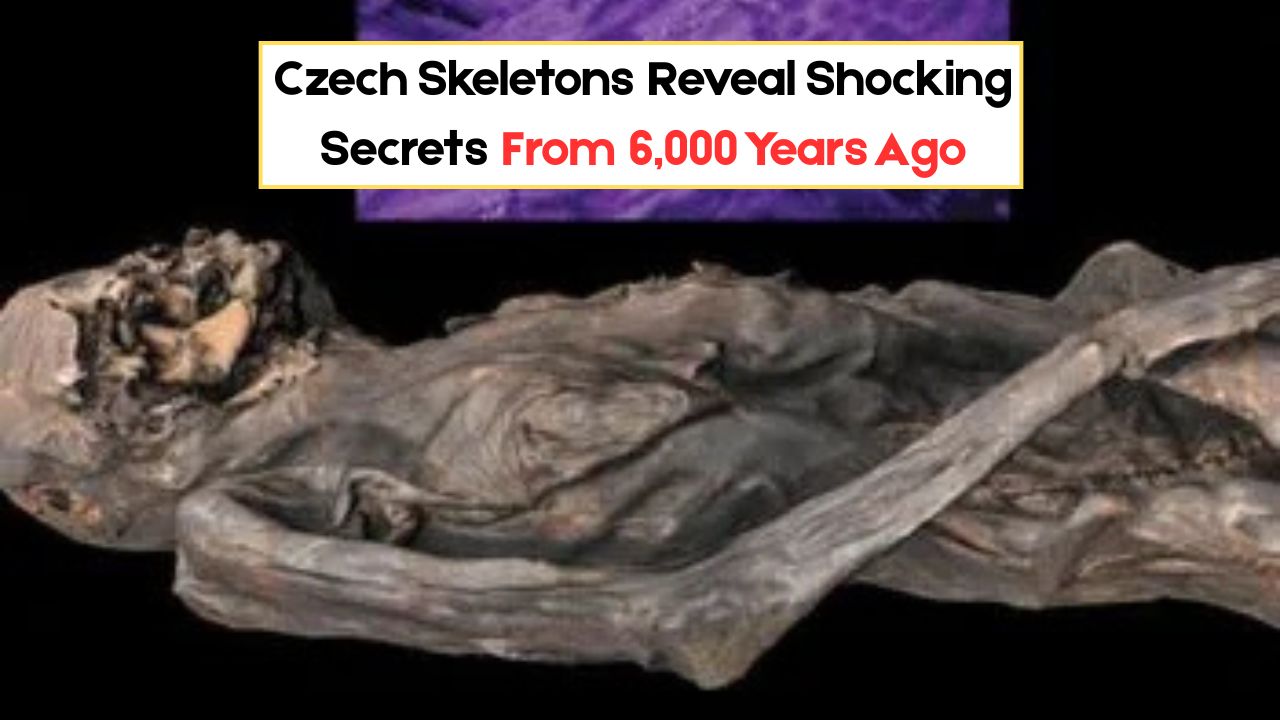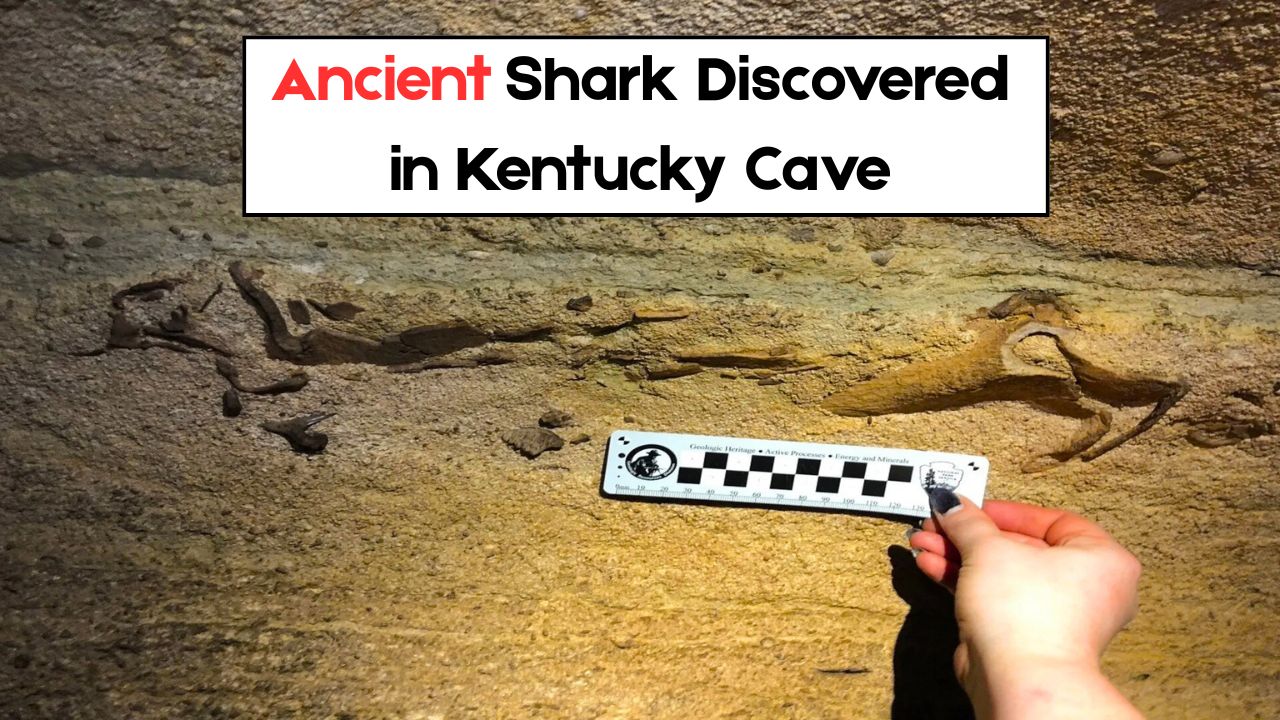800‑Year‑Old Human Bones – In a discovery that has stunned archaeologists and historians alike, a collection of 800-year-old human bones has been unearthed in South Texas—transformed into eerie yet intricately crafted musical instruments. These rare artifacts, believed to have Aztec origins, are offering new insights into the ancient rituals and musical practices of Mesoamerican civilizations. The find not only sheds light on the sacred importance of sound in Aztec ceremonies but also raises chilling questions about the possible sacrificial origins of these instruments. The revelation came during a routine excavation near a known indigenous site close to the Rio Grande Valley. Researchers from a collaborative team of local and international archaeologists uncovered bones—mostly femurs and humeri—that had been hollowed out, polished, and intricately engraved with symbols consistent with Aztec iconography. Sound tests revealed they produce haunting flute-like tones when played, sending chills down the spines of the excavation crew.
The Shocking Discovery in South Texas
This find has surprised many scholars due to its unexpected location—far from the traditional boundaries of the Aztec Empire in Central Mexico.
- Discovered in: Rio Grande Valley, South Texas
- Estimated age: ~800 years old (1200s AD)
- Number of instruments: 12 bone flutes and 4 trumpet-like instruments
- Material: Human femur and humerus bones
- Symbols: Aztec gods, celestial patterns, death imagery
- Condition: Remarkably well-preserved due to dry soil and burial depth
- Initial theory: Possibly carried north through trade or migration
- Current theory: Evidence of ritualistic expansion or isolated Aztec enclave
Aztec Rituals and the Role of Music
Music played a powerful role in Aztec rituals. Instruments made from human bones were rare, sacred, and often associated with sacrifice and communication with the spirit world.
- Music was used during ceremonies, warfare, and funerals
- Bone flutes were linked to the god Mictlantecuhtli (god of death)
- Instruments were often used to guide souls into the afterlife
- Sounds were believed to open “spiritual portals” during rituals
- Specific melodies mimicked animal calls or echoed natural phenomena
- Dancers often performed in sync with bone instruments
- Bone instruments were used by elite priests and shamans only
How the Instruments Were Made
The transformation of human remains into instruments was a delicate and sacred process that required both craftsmanship and ritual purification.
| Step | Process Description |
|---|---|
| 1 | Selection of bones (mainly femur, humerus, or tibia) |
| 2 | Ritual cleansing of the bones by fire or herbs |
| 3 | Hollowing of the bone using sharp obsidian blades |
| 4 | Polishing and smoothing of the exterior surface |
| 5 | Carving of sacred symbols and spiritual markings |
| 6 | Drilling of finger holes and sound channels |
| 7 | Ritual blessing before use in ceremonies |
The Mystery of How They Got to South Texas
While the Aztec heartland was based in central Mexico, the presence of these instruments in South Texas is baffling experts. Several theories are being explored.
Theory 1: Trade Route Movement
Some historians believe these instruments were carried through extensive trade networks that connected the Aztecs to other Mesoamerican and Native American cultures.
- Aztecs traded goods such as obsidian, cacao, feathers, and jewelry
- Musical instruments could have been valuable trade items
- Northern tribes may have adopted Aztec spiritual tools
Theory 2: Aztec Ritual Expansion
Another theory suggests that Aztec priests or cults traveled north to spread their influence and establish sacred ritual enclaves.
- Aztecs were known to send religious envoys
- Expansion may have occurred before Spanish arrival
- South Texas might have been a temporary Aztec outpost
Scientific Testing and Radiocarbon Dating
To ensure the accuracy of the find, researchers have undergone multiple rounds of lab testing and dating.
| Test Type | Results |
|---|---|
| Radiocarbon Dating | Estimated age: 1190–1250 AD |
| Isotope Analysis | Confirms bones belonged to Mesoamericans |
| Acoustic Testing | Flutes produce 4–5 distinct haunting notes |
| DNA Remnants | Human DNA traces confirmed |
| Soil Analysis | Burial consistent with ritualistic site |
| Engraving Study | Symbols matched Aztec god iconography |
| Residue Detection | Found herbal traces used in purification |
Global Reactions and Ethical Debates
The discovery has stirred both fascination and ethical debates across the archaeological and cultural world.
Mixed Reactions from Experts and Cultural Groups
- Archaeologists: Hail it as a breakthrough in understanding Aztec ritual sound
- Indigenous groups: Demand respectful reburial and spiritual restitution
- Museum curators: Interested in temporary exhibitions
- Ethical researchers: Urge handling the bones with cultural sensitivity
- Governments: Monitoring claims of cultural repatriation
- Tourists and media: Swarming to learn more about the “haunted flutes”
- Musicians: Experimenting with 3D replicas for historical sound recreations
This spine-chilling discovery reminds us how sound, death, and spirituality were intertwined in ancient civilizations. While modern eyes may see these bone instruments as macabre, to the Aztecs they were vessels of divine music—guiding the souls of the dead, celebrating gods, and echoing across centuries into our present. Whether traded across vast territories or carried by priests fleeing conquest, these flutes have endured as haunting echoes of an ancient world that revered both music and mortality.
FAQs
Q1: Were these human bones used with consent?
A1: Likely not. These were most likely sacrificial victims used in ritualistic practices by Aztec priests.
Q2: Can the bone flutes still be played today?
A2: Yes, though very fragile. Acoustic testing revealed they still emit haunting tones.
Q3: Why were Aztec instruments found in South Texas?
A3: Possibly due to ancient trade routes or migrating Aztec religious groups expanding their influence.
Q4: Are these artifacts on display?
A4: Not yet. They are currently undergoing preservation and cultural consultation before any exhibit plans.
Q5: Will the bones be reburied?
A5: This depends on ongoing negotiations with indigenous communities and ethical review boards.
